Bring your own bottle
British Airways trials ditching bottled water in fresh cost-cutting push
I have two competing passions in life: aviation and water. The former you probably know about by now. The latter… perhaps feels quite on brand. Growing up, I could easily identify whether a particular glass of water emanated from the kitchen tap, downstairs toilet, family bathroom or the sink in the attic. With regard to the bottled stuff, I was firmly on the Volvic end of the great Evian-Volvic divide.
Given this, a story about British Airways and bottled water was always going to be hard to resist. As reported on the FlyerTalk forum, the airline is trialling the removal of bottled water from its economy cabins on select long haul routes: London Heathrow to Boston, Miami and Los Angeles. In their stead, cabin crew will be on hand to provide cups of water to thirsty passengers. To which I say: good luck to them.
Flight attendants are busy people. You try cooking for, serving to and cleaning up after several hundred people in a small metal tube for hours on end. The idea that they must traipse up and down the aisles pouring water into tiny cups seems like an odd move. And they will — because science.
The reason why your throat dries up on an airplane is that cabins have extremely low relative humidity. A 2013 study by the University of Palermo found levels ranging from 1.8% to 18.5% on a variety of aircraft, including the Airbus A320 and Boeing 767. For reference, the average humidity in the Sahara Desert is 25%.
Added to this, food on board is often high in salt, as the lack of humidity, lower air pressure and even the engine noise combine to reduce taste bud sensitivity by as much as 30%. So access to a water bottle mid-flight is essential, not least on an 11-hour journey from London to Los Angeles.
British Airways will no doubt point to sustainability concerns, which I might take more seriously if the company weren’t the UK’s most polluting airline, emitting more than 7.5 megatonnes of carbon dioxide in 2023, according to Transport & Environment1. If this were purely about the planet, alternative packaging — metal cans, cardboard cartons, as well as a pre-flight email to passengers encouraging them to bring their own bottle — might have been considered.
Instead, the bottled water decision fits neatly into a pattern of recent cost-cutting measures that have not always gone down well with passengers. Take, for example, the airline’s short-lived attempt to replace lunch with brunch on all flights departing between 8:30am and 11:30am. Reasonable on paper — until you realise that breakfast is the cheapest meal to serve, and that an 11:30am flight may not serve a meal until 1 or 2pm. Which is not exactly eggs-and-pancakes o’clock — particularly if you’ve already enjoyed breakfast in the lounge.
The same logic appears to apply to dinner. British Airways also trialled cutting back meal service on flights departing after 9pm. Again, there may be a logistical case for this — many passengers on the short New York to London red eye may prefer to maximise sleep. But the net result is uncanny: fewer meals, lower costs.
Taken individually, these changes might seem minor — operational quirks, even. But viewed collectively, they reveal a creeping shift: an airline slowly trimming back the passenger experience across all cabins, slugging it out with ultra-low cost carriers, while continuing to position itself as a premium carrier.
To be fair, British Airways isn’t alone in facing criticism. Talk to Americans about their big three airlines, Germans about Lufthansa, Australians about Qantas. National carriers attract national complaints. Nor is BA alone in its cost-cutting drives. Back in the 1980s, Bob Crandall, then chief executive of American Airlines, suggested removing a single olive from each salad. It saved the company $40,000 a year2.
And the strategy is working. Earlier this year British Airways’ owner, International Airlines Group, announced post-tax profits of more than £2bn for 2024, with operating profits jumping by 22% on the previous year to £3.5bn. Meanwhile, BA has been investing as well as cost-cutting, retrofitting aircraft with its new (and much improved) Club Suite business class, as well as upgrading lounges as part of a £7bn transformation plan.
But old habits die hard. If you’re flying BA, bring your own bottle.
I know I write about aviation a lot, but I don’t do much flying these days. Though I still worry that even watching airline reviews on YouTube has some latent carbon costs
I have not calculated an inflation-adjusted figure — it’s Friday



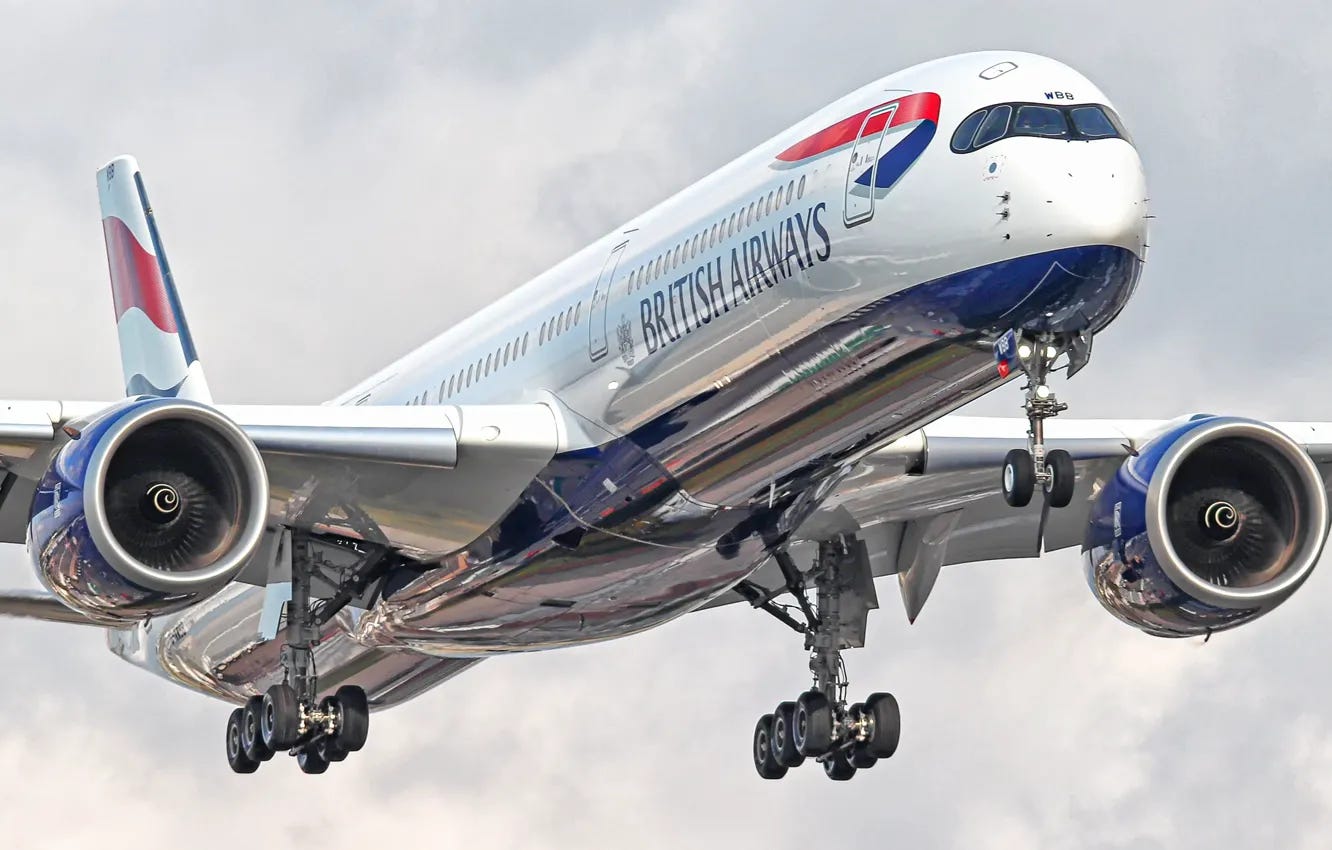
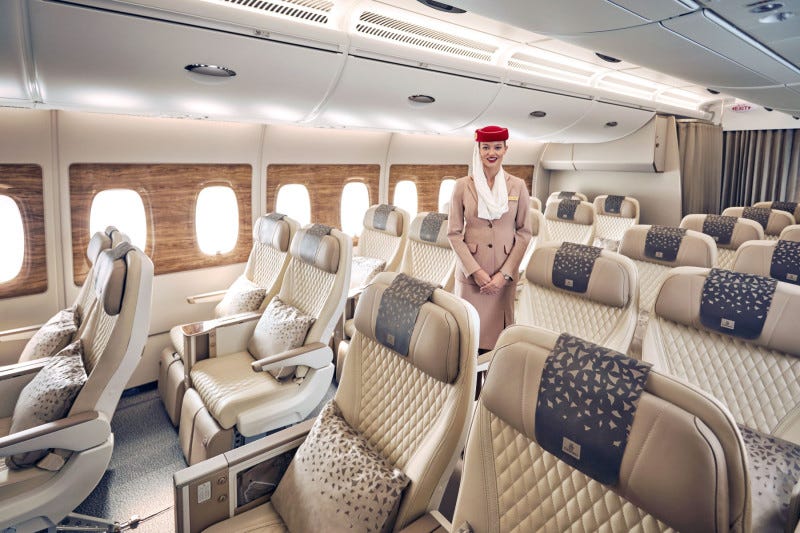
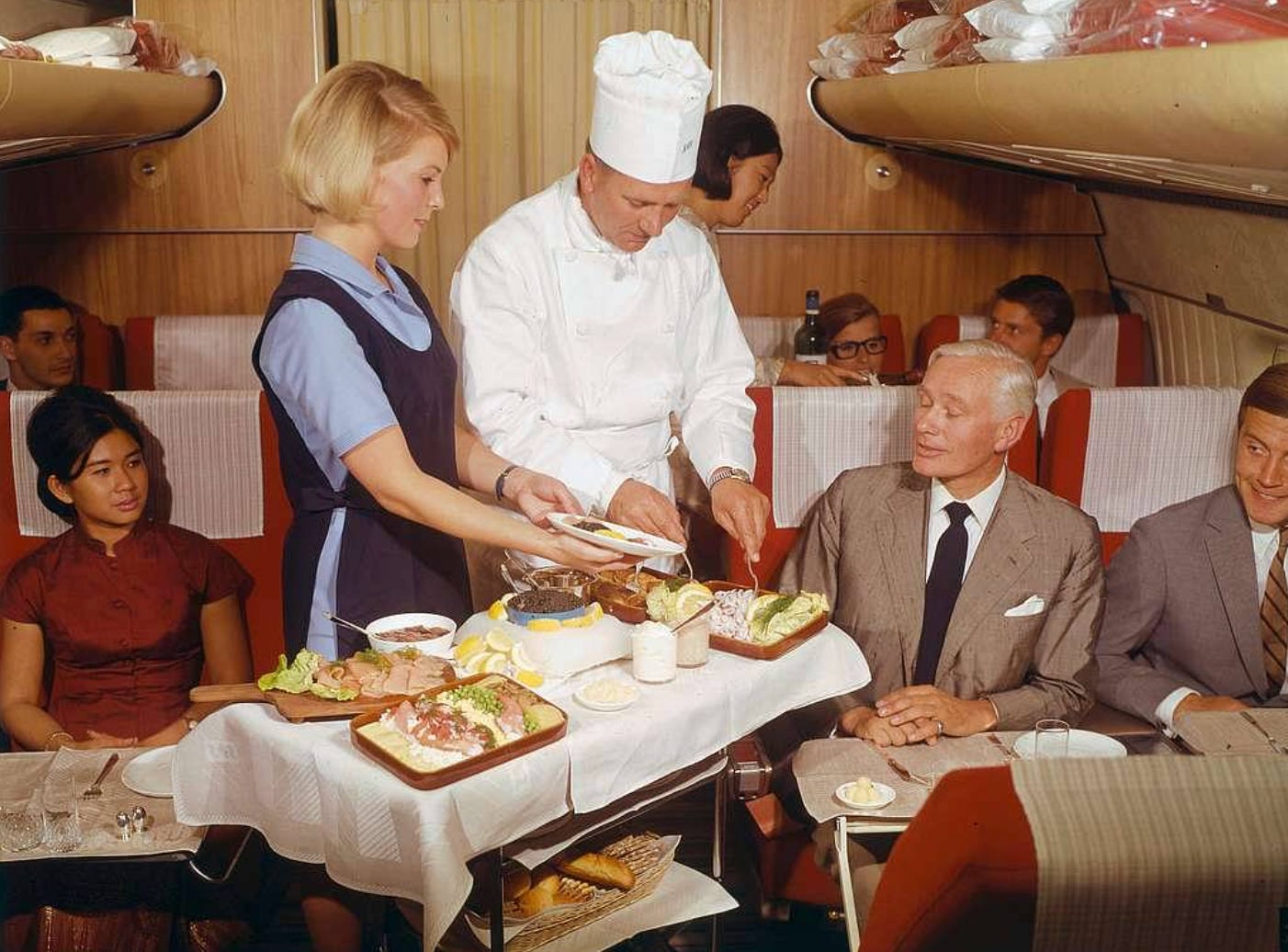

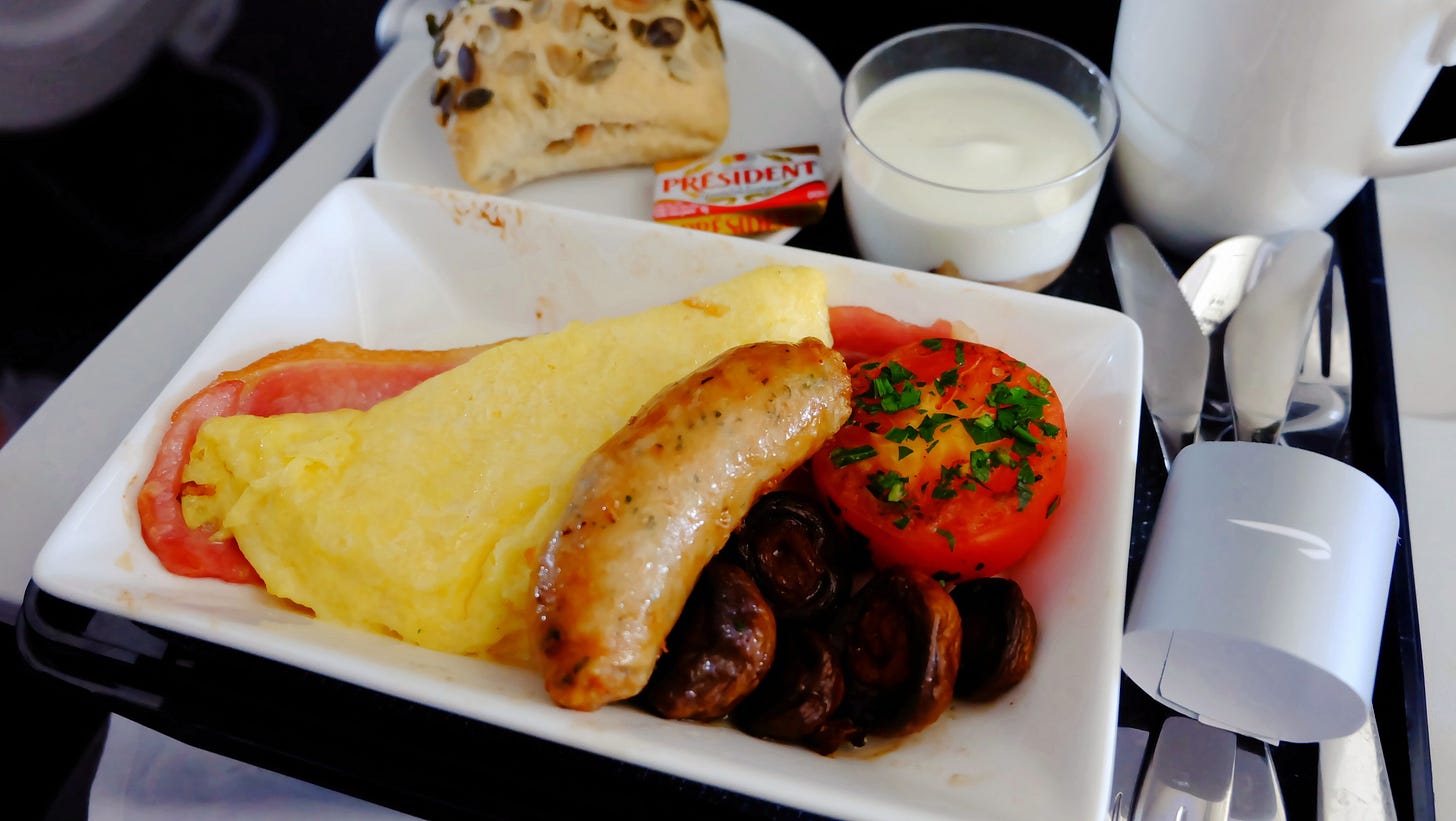
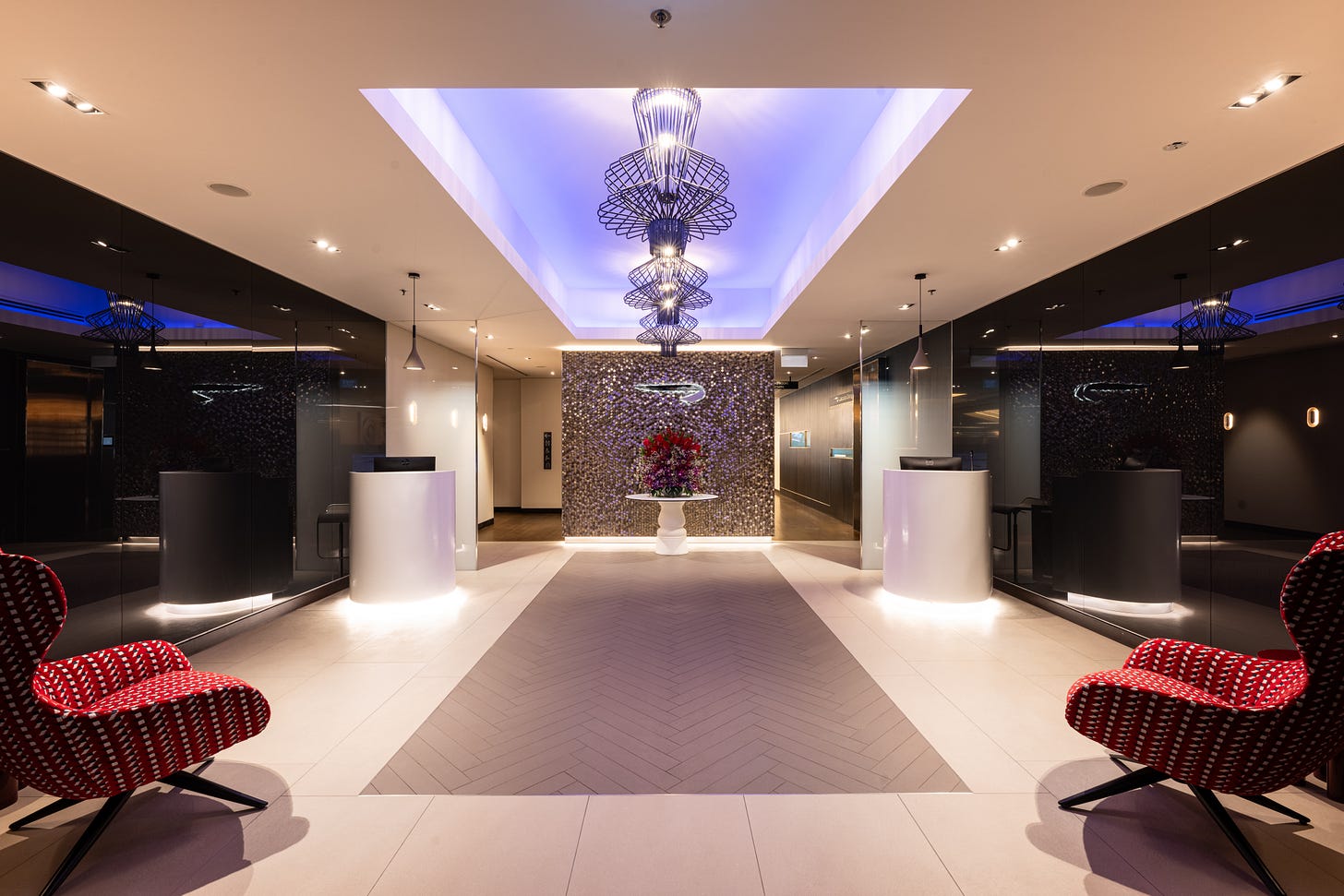
As they force you to buy water in whatever form after you go through security, it is much cheaper to take a net of Satsumas, which quench thirst and provide a sugar boost during the flight. I gave up on the airline meals many years ago when I decided I was better off having a meal before I boarded. Even AirFrance meals had no taste whatsoever.